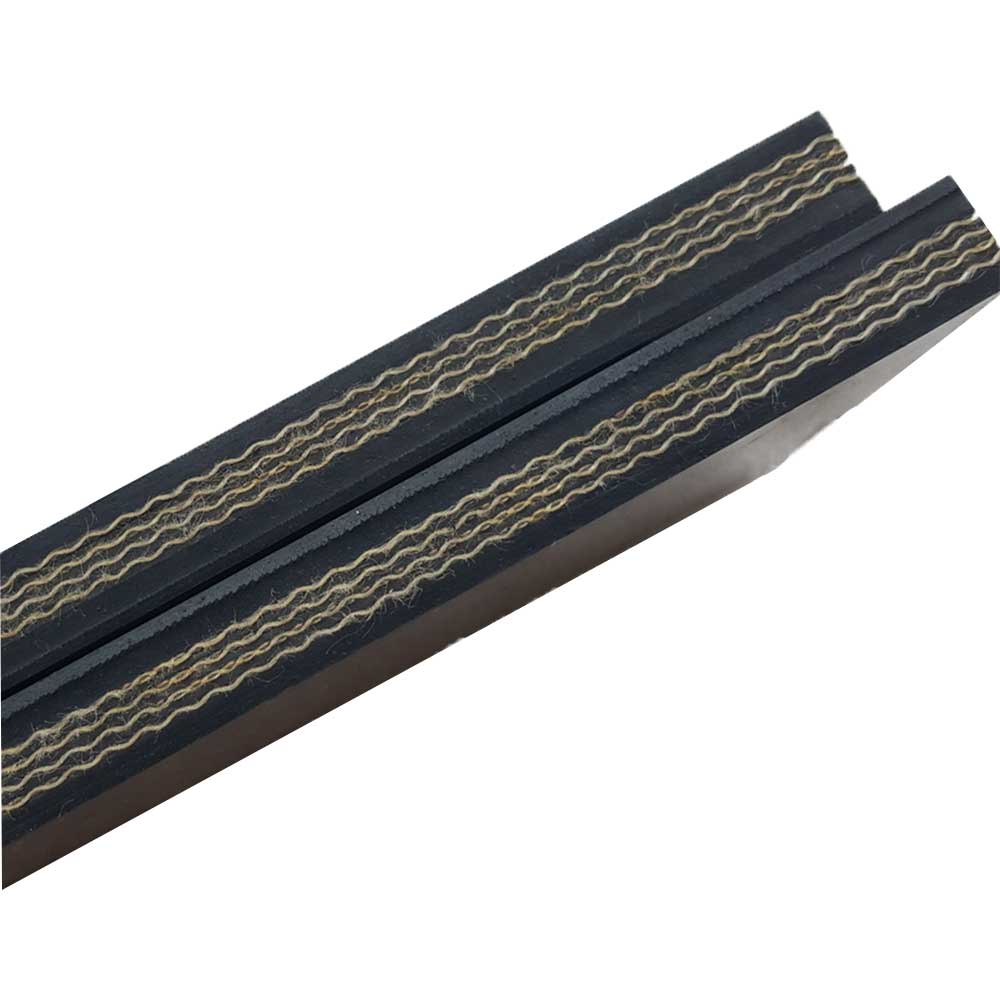
1. Overview
General-purpose fabric core conveyor belt is a conventional conveyor belt widely used in various industries. It has the advantages of strong transmission capacity, long service life, easy operation, etc. It is widely used in mining, ports, electric power, chemical industry, metallurgy, construction, food Material transportation in other industries.
2. Classification
General-purpose fabric core conveyor belts can be divided into various types according to different uses, usage environments, conveying materials and other factors, such as wear-resistant, high-temperature-resistant, cold-resistant, anti-static, oil-resistant, acid and alkali resistant, etc. .
3. Product features
① This product is made of pure cotton canvas (CC) or interweaved cotton canvas (VC) through calendering, molding, vulcanization and other processes.
②This product adapts to the requirements of different usage conditions and can be made into different structural specifications such as edge-wrapped type, open-edge type, middle ladder type, side ladder type, etc.;
a. Belt core material: polyester-cotton intertwined fabric TC-70 type, cotton canvas type CC-56
b. Bandwidth: 300mm-3000mm
c. Cloth layer: 1-12 layers
d. Covering glue thickness: working surface: 1.5-10mm; non-working surface: 0mm-6mm.
This kind of conveyor belt uses fiber fabric as the belt core and general rubber as the covering material, and the surface is smooth and flat. The belt core is a layered or integral fabric woven from fibers such as cotton, nylon, polyester or vinylon. Cotton fiber is the earliest core material used. It is easy to bond with rubber. Its strength is slightly improved when wet. However, its breaking strength is low (mostly around 56 N/(mm·layer)). It has poor anti-corrosion and mildew resistance, and its use is gradually decreasing. . In the late 1950s, nylon fiber fabric began to be used as core material, and has become the most widely used one. The strength of nylon fiber is as high as 700 N/(mm·layer), and it is water-resistant, corrosion-resistant, and bending fatigue-resistant; but its elastic elongation is large. The performance of polyester fiber is similar to that of nylon fiber, but its elastic elongation is only half of that of nylon fiber. It is a promising material.Vinylon fiber has a strength of 200 N/(mm·layer), smaller elastic elongation than nylon fiber, is easy to bond with rubber, and has good heat resistance, but its strength is reduced by 10 to 25% when wet. It is only available in China and Japan. applied in a few countries. When weaving the belt core, only one fiber can be used, or two fibers can be blended or interwoven.
③ Ordinary conveyor belts are widely used in building materials, chemical industry, coal, electric power, metallurgy and other departments. They are suitable for transporting non-corrosive and non-sharp lump, granular and powder materials at room temperature, such as coal, coke, sand and gravel. It can transport bulk, granular, powdery and other loose materials with a density of 6.5~2.5t/m3. It can also be used to transport bulk materials.
Friendly reminder:
1. We can make any type of rubber conveyor belt.
2. We have complete procedures and can mail to anywhere in the world.
3. All products support customization.